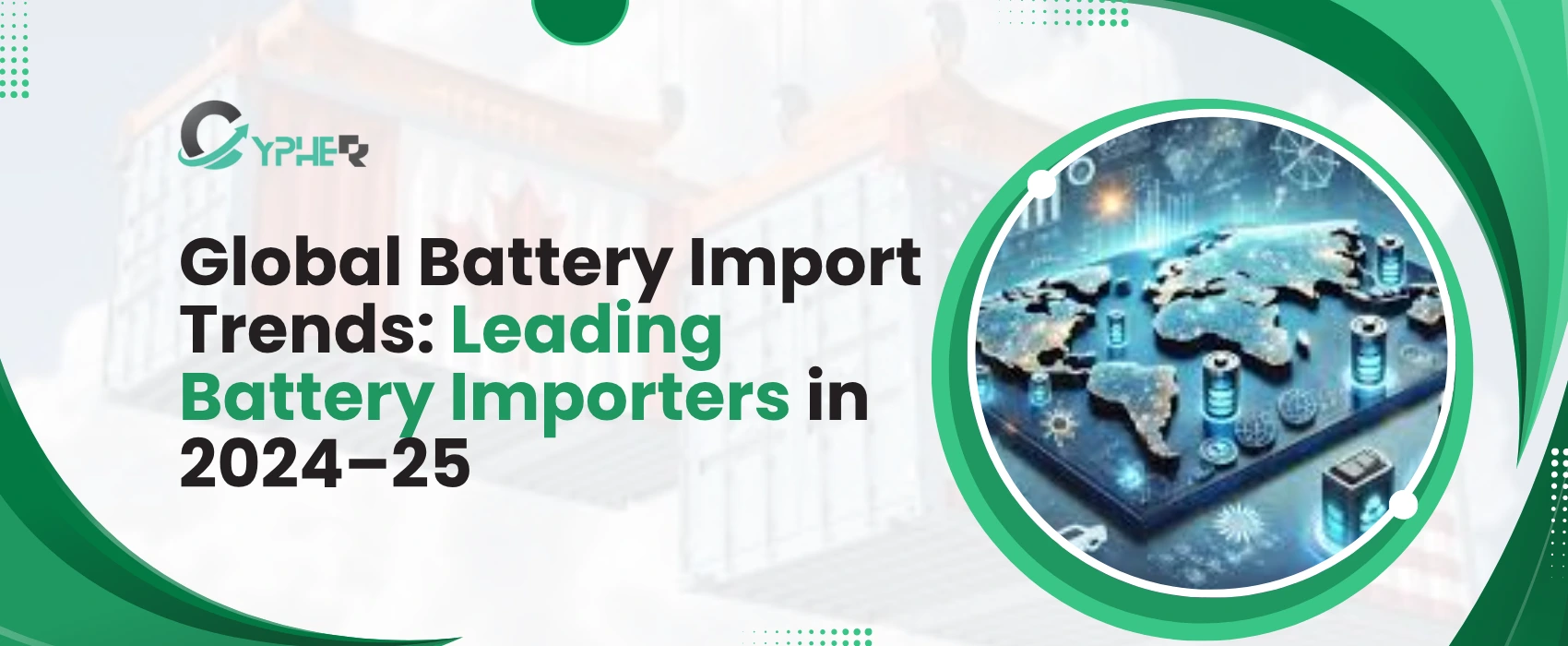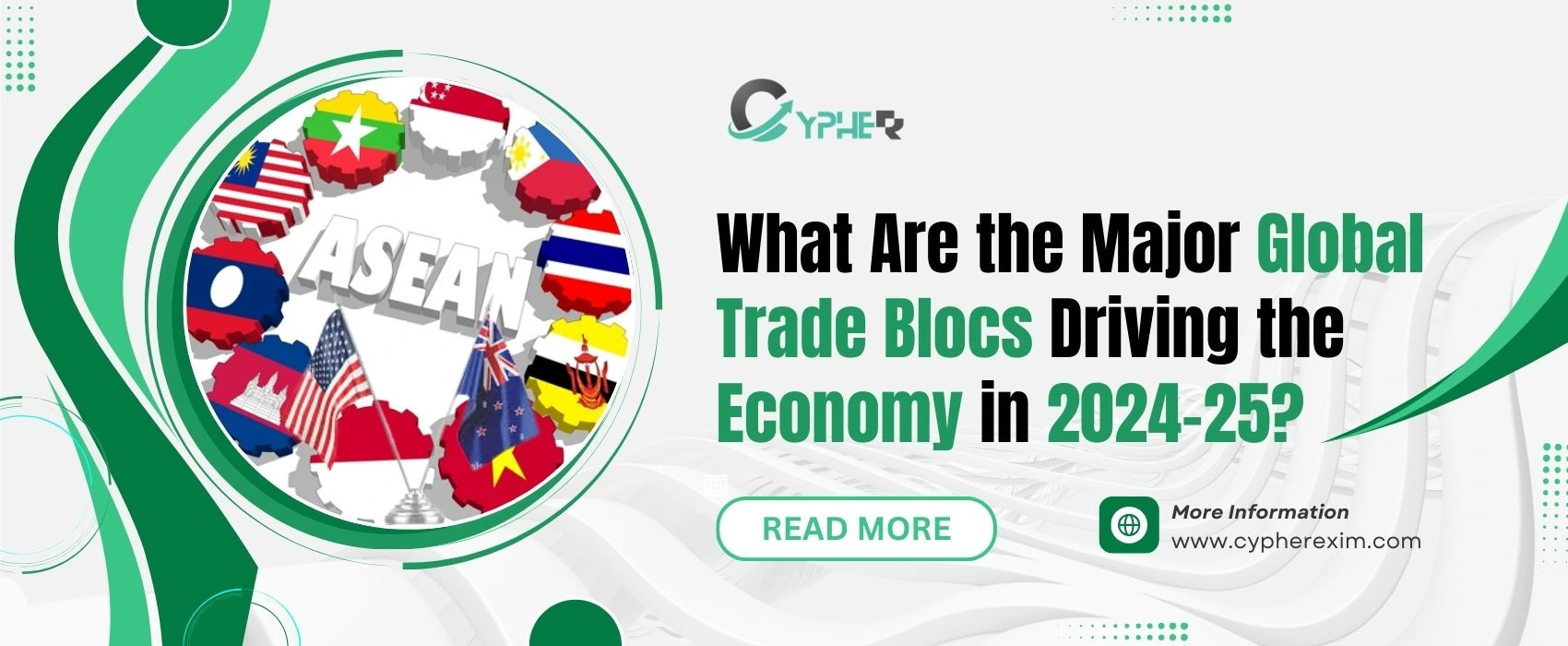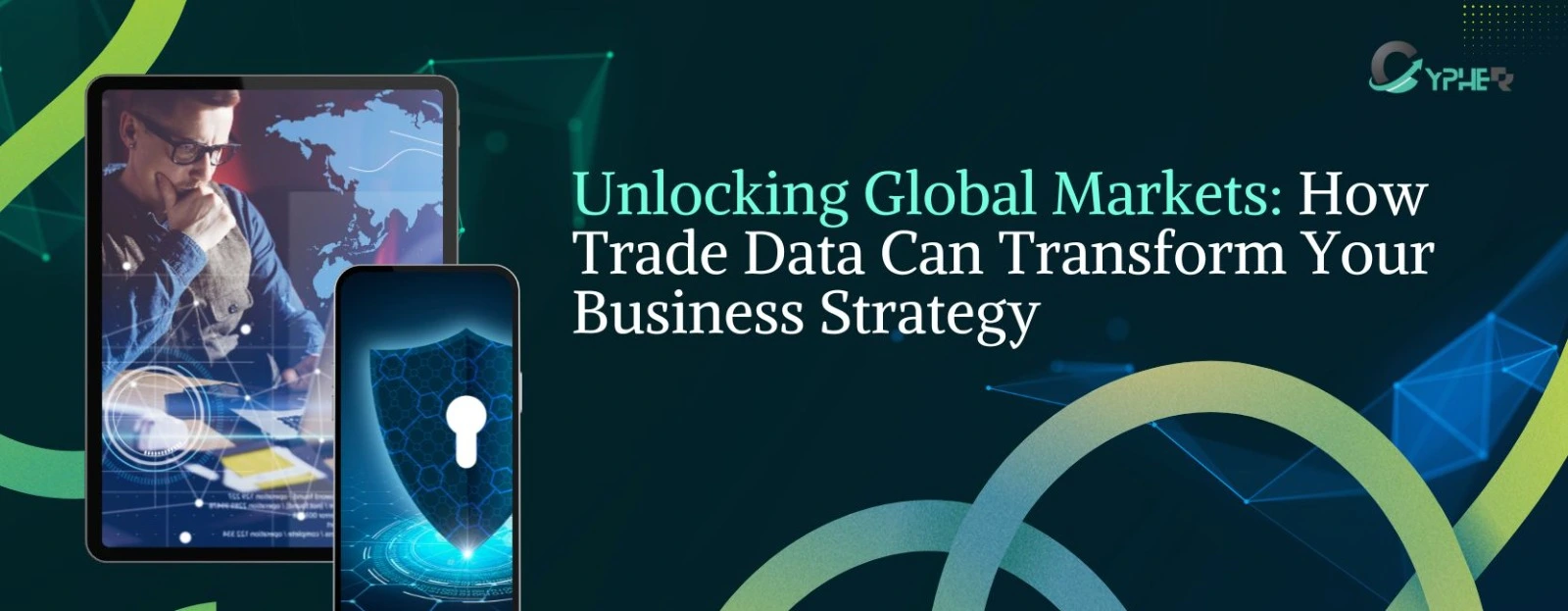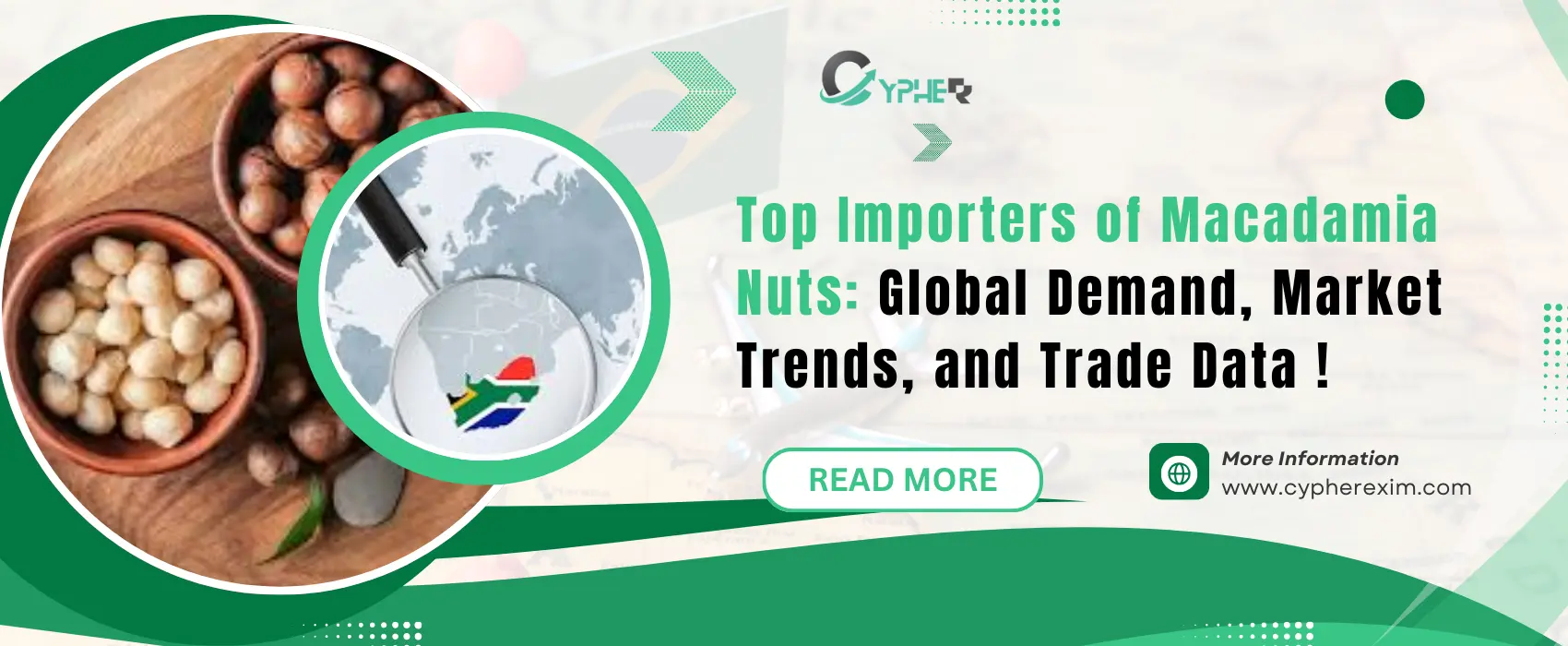Global Battery Import Trends: Leading Battery Importers in 2024–25

13 Aug 2025
The global battery trade is booming, and batteries are at the heart of today’s technological and environmental revolution. From powering electric vehicles (EVs) to storing renewable energy, batteries…especially lithium-ion and lithium-polymer types, are essential to modern life. The demand for these power sources is surging, driven by the rise of EVs, renewable energy projects, and consumer electronics. In 2024 to 2025, the global battery market is projected to grow by 30%, 40% annually, with countries trading massive amounts of batteries and raw materials to meet this demand. Understanding import data, export data, and custom data is key to navigating this fast-paced market. These datasets reveal which countries lead the trade, what types of batteries are in demand, and how trade policies shape global supply chains. This blog explores the latest battery import trends for 2024 to 2025, highlighting the top importers, key drivers, and the role of trade data in shaping the industry.
To set the stage, let’s look at 2023’s import data. China led the pack, importing $38 billion worth of lithium batteries, capturing a 60% share of global imports. The United States followed with $23 billion, holding an 18% share, while Japan imported $11 billion, accounting for 11%. South Korea and Germany rounded out the top five, importing $9 billion and $7 billion, respectively. Other notable importers included France ($4 billion), the United Kingdom ($3.8 billion), and India ($2 billion). These figures show that a few countries dominate the battery trade, driven by their strong manufacturing sectors and growing EV markets. As we move into 2024–2025, these nations continue to shape global trends, with new players and technologies emerging.
Several factors are driving battery imports in 2024–2025. The electric vehicle boom is the biggest force, with global EV sales reaching 17 million in 2024 and battery demand surpassing 1 terawatt-hour (TWh). Countries like China, the U.S., and Germany are importing huge volumes of lithium-ion batteries to support EV production. Additionally, the push for renewable energy storage is fueling demand, as batteries are critical for storing power from solar and wind farms. Europe and North America, particularly Germany and the U.S., are importing batteries to support clean energy projects. Supply chain diversification is another key driver, as geopolitical tensions push countries to reduce reliance on China, which dominates the global battery supply chain with 46% of raw battery mineral imports and 74% of battery pack exports in 2023. Technological advancements, like the rise of lithium-iron phosphate (LFP) batteries, are also shaping imports, with custom data showing increased trade in these cost-effective, safer batteries. Finally, government policies, such as U.S. tax credits and China’s export restrictions on materials like graphite, are influencing import patterns.
China remains the world’s top battery importer in 2024 2025, with projected imports of $40–$45 billion. Despite producing over 75% of global batteries, China relies heavily on imported raw materials like lithium, cobalt, and graphite to fuel its massive manufacturing sector. Custom data shows China importing more processed battery materials to streamline production, with Australia supplying nearly all its lithium exports. The United States is the second largest importer, with imports expected to reach $25, $30 billion. While U.S. battery production capacity has doubled to over 200 gigawatt-hours (GWh) in 2024, the country still depends on imports from China, South Korea, and Japan. Export data from these countries highlights a steady flow of battery packs and components to the U.S. market, driven by the EV and renewable energy sectors.
Germany, Europe’s battery hub, is projected to import $8–$10 billion in batteries in 2024–2025. Its automotive giants, like Volkswagen and BMW, drive demand for EV batteries, but high production costs and a lack of specialized workers make Germany reliant on imports from China and South Korea. Custom data reveals a growing trend in LFP battery imports as German automakers adopt this affordable technology. Japan, with imports of $12–$15 billion, is another major player, driven by its advanced electronics and automotive sectors. Companies like Panasonic rely on imports of raw materials and finished batteries, primarily from China and South Korea, to support production. South Korea, with imports of $10–$12 billion, is a rising star, importing raw materials to fuel its battery giants like LG Chem and Samsung SDI, which produce high-performance nickel-manganese-cobalt (NMC) batteries.
Emerging importers are also making waves. India, with imports of $2–$3 billion, is gaining traction due to its expanding EV market and clean energy initiatives. France, importing $4–$5 billion, is driven by its automotive sector and renewable energy goals, while the United Kingdom, with $4 billion in imports, is focused on growing its EV and energy storage markets. These countries are leveraging import data and export data to identify reliable suppliers and optimize their supply chains. Custom data, such as shipment records and pricing trends, provides deeper insights, showing that global lithium battery imports reached $116.6 billion in 2023, with China and the U.S. leading the way.
Despite the opportunities, importers face challenges. Supply chain risks are a major concern, especially with China’s dominance and potential export restrictions on materials like graphite. High production costs in Europe, which are 50% higher than in China, make imports more attractive but increase dependency on foreign suppliers. Geopolitical tensions, such as U.S.-China trade disputes, could disrupt import flows. Additionally, sustainability pressures are pushing importers to source eco-friendly batteries, requiring suppliers with green practices. However, opportunities abound. Emerging markets like India and Vietnam are becoming trade hotspots, while the rise of LFP batteries opens new import markets. Custom data helps importers identify high-growth niches, and partnerships, like the Stellantis-CATL joint venture in Europe, are improving access to affordable batteries.
Looking ahead, the battery trade will keep evolving. Importers will diversify suppliers, with South Korea, Japan, and emerging hubs like Indonesia gaining ground. LFP batteries will dominate due to their cost-effectiveness, while solid-state batteries may emerge in trade data. New trade agreements and regulations in Asia and Europe will shape import patterns, and the use of custom data will grow, enabling smarter decisions in a competitive market. The global battery trade is a dynamic space, full of potential for businesses and governments. By leveraging import data, export data, and custom data, stakeholders can stay ahead and power the future with confidence. For the latest insights, platforms like Import Globals and Cypher Exim offer valuable tools to navigate this electrifying market.







